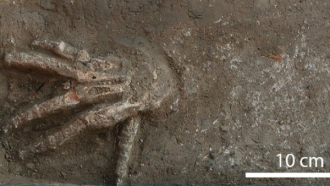Despite its advanced age, the Mars Opportunity rover continues to provide scientists on Earth with valuable data on the Red Planet. The spacecraft has beamed back its observations of the Martian surface as well as evidence of past water activity on the alien world.
In its 12th year of active service, NASA has tasked Opportunity with investigating the environment on Mars. Mission scientists in-charge of the spacecraft said that they would like to take advantage of fairer weather now that the winter solstice on the planet is finally over.
"Opportunity has stayed very active this winter, in part because the solar arrays have been much cleaner than in the past few winters," John Callas, project manager of the Mars Exploration Rover,said.
Differences In Earth And Martian Seasons
While Opportunity has been exploring Mars since January of 2004, it has only experienced seven Martian winters. This is because the distance of the Red Planet from the sun causes it to have longer years compared to the Earth. One year on Mars is equivalent to about 1.9 years here on Earth.
Mars also spins on a tilted north-south axis, much like the Earth. This allows the planet to experience winter and summer seasons as well.
However, unlike its blue sister, Mars has seasons that last twice as long as those on Earth. This is why even though the rover has been on the Red Planet for the past 12 years, it hasn't seen too many winters.
Marathon Valley
After exploring the western rim of the Endeavor Crater, the Opportunity rover is now examining rock formations found on area known as "Marathon Valley."
Using data collected by the Mars Reconnaissance Orbiter (MRO), NASA scientists discovered that the valley contains clay mineral concentrations that likely have been formed under wet yet non-acidic conditions.
The researchers used the rover's rock abrasion tool to remove the surface crust from a rock target designated as "Private John Potts". They then examined the texture and composition of its exposed interior using rover's robotic arm.
To carry out its work on the south side of Marathon Valley, Opportunity has to keep its solar panels tilted in the direction of the sun as it crosses the northern sky. This strategy, along with dust-clearing events on Mars, has helped lengthen Opportunity's career beyond its intended three-month warranty upon landing on the planet.
The spacecraft's solar panels are currently providing it with over 460 watt hours every day, which is a 40 percent improvement compared to the energy output they had during theMartian winter. The Opportunity rover was able to carry out power-intensive maneuvers such as driving and grinding rocks despite receiving minimal solar power.
The rover's performance during last season was considerably better than when it arrived on the rim of the Endeavor Crater. The spacecraft suffered from low power generation throughout its first winter in the crater, causing it to postpone any power-draining maneuvers for over four months.
Callas said that with better power levels, they are looking to complete their exploration of the Marathon Valley. They also plan to give Opportunity with more missions in the future.













